Alatri, 1997. During restoration work on a room adjacent to the cloister of Saint Francis church, some colours faded by time emerged from a narrow passage. The building was erected starting in 1220 and its adjoining convent dates back to 13591. Certainly the unexpected room, lost in the oblivion of time, was probably part of a pre-existing structure, perhaps an older church with vaulted ceilings and a west-facing façade2. But why preserve, and at the same time hide from view, such a mysterious space?
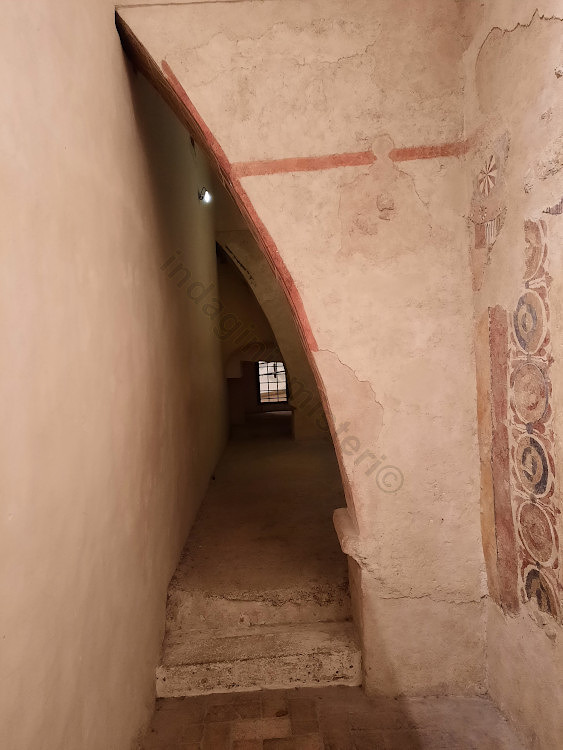
The answer began to appear in those astonishing colours, which slowly was taking shape under the light. The walls of the passage were frescoed, beautifully decorated by human hands centuries ago. Here, knots and symbols of life appeared in a harmonious weave, surrounded by hues of shadow. Among the decorative motifs, some flowers of life showed variegated tones. The flower of life is a sign of resurrection, it is the narcissus announcing the awakening of nature in spring. Then, turning the eyes upwards, a Christ Pantocrator was revealed, and all around it was a labyrinth of inextricable mystery.
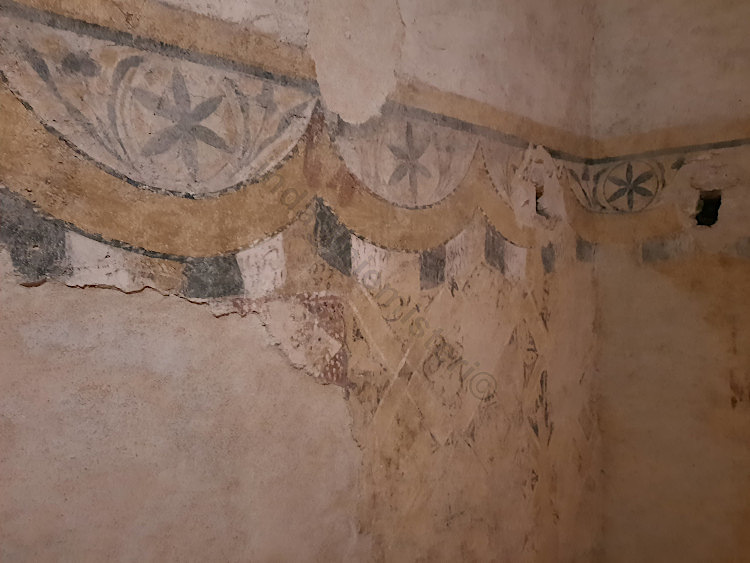
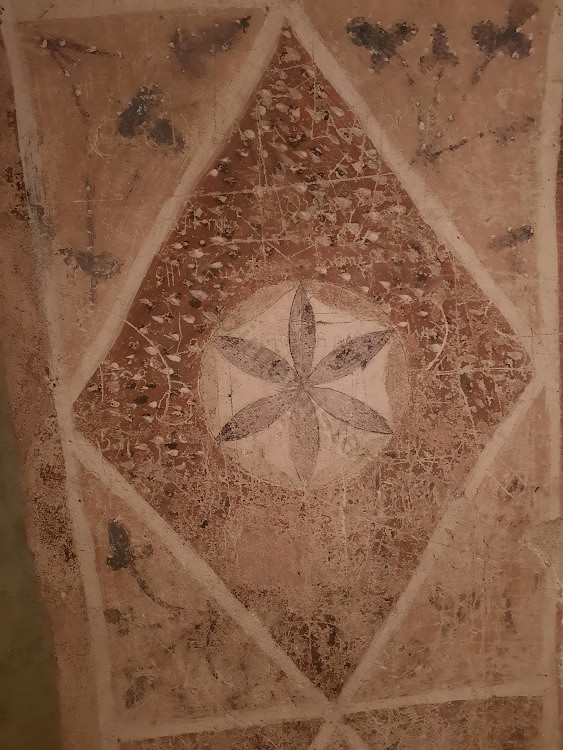

Christ in the labyrinth of Alatri
Although the work is incomplete, and in some parts almost illegible due to the precarious state of preservation, it is a masterpiece. The labyrinth is circular and unicursal with eleven coils, 1.40 metres long at its widest point. The path leads from the outside of the work to its innermost core, where the figure of Christ stands majestically. According to an iconography widespread in the Middle Ages, the Saviour is depicted with beard and halo, tunic and golden cloak. With his left hand he holds the book of Sacred Scripture, while with the other he indicates the dangerous labyrinth. The face of Christ is reminiscent of Byzantine icons.
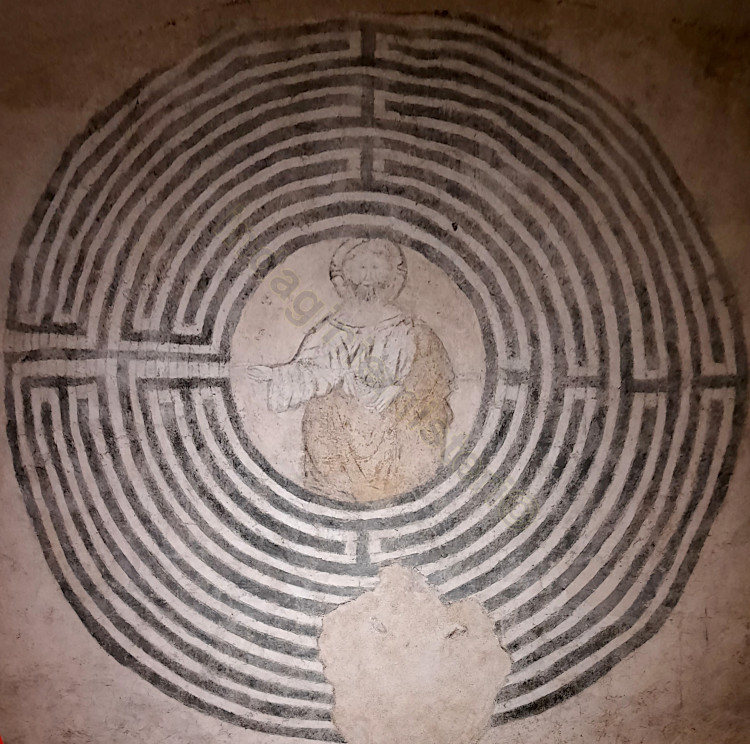
The medieval labyrinth of Alatri is not the only one in the world with eleven spirals and a unicursal arrangement. Identical artefacts are found in Lucca, in the Cathedral of San Martino and on the floor of Chartres Cathedral in France. Nevertheless, only in Alatri is the figure of Christ Pantocrator, that represents a unicum of its kind. This work is dated between the 13th and later centuries; radiocarbon analysis, carried out on the wall where the labyrinth is located, has revealed a date around the 14th century3.
The symbolic meaning of Christ in the labyrinth
To fully understand the symbolic significance of Christ in the labyrinth of Alatri, it is necessary to dwell on the principles of the Medieval Christian theology. In particular, it is to be interpreted as a path of conversion, along which man forsakes sin and achieve the salvation. The path is unique because there is only one way of redemption: Christ himself, according to the words of the Saviour who states in the gospels “I am the way and the truth and the life. No one comes to the Father except through me”4.
A work by the Knights Templar?
The labyrinth of Alatri is a great mystery; its author is not known, nor is it mentioned in any historiographical sources. Why it was hidden, and at the same time preserved from destruction, is an enigma that deserves further investigation. Considering the possible period of its realisation and the historical context, the work was perhaps commissioned by the Knights Templar. Indeed, following the disputes between Clement V and Philip the Fair, the Order of the Temple of Jerusalem was abolished in 1312 by the Pope. Is it possible, therefore, that someone wanted to erase their traces in Alatri by hiding the labyrinth? In support the Templar hypothesis of the labyrinth, Giancarlo Pavat points out the presence of some Crosses Pattée on the counter-façade of Saint Francis church, where the work is located, and at the church of Saint Silvestro5.
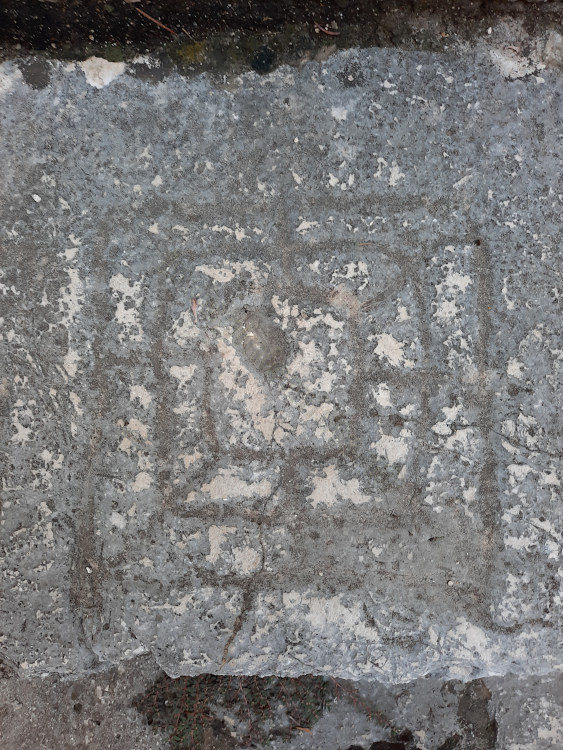
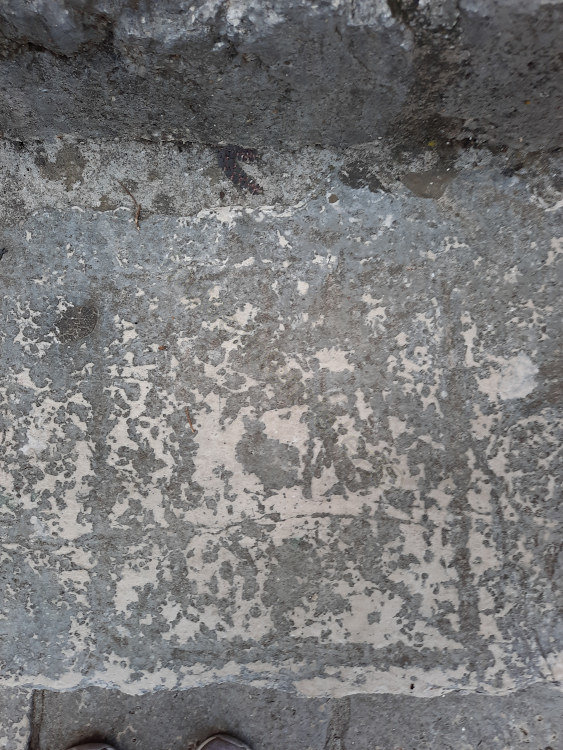
The presence of the Knights Templar in Alatri, an important cultural centre of Christianity over the centuries, is confirmed by other small clues. On the steps leading up to the church of San Francesco, probably on reused material, two Merels Board are engraved. This is a symbol with an important historical meaning that, according to some hypotheses, represents the architecture of the ancient Temple of Solomon in Jerusalem, from which the name of the Templars derives.
Samuele Corrente Naso
Map of places
Notes
- A. Frusone e G. Zomparelli, Alatri, tipografia Strambi, 1986. ↩︎
- G. Manchia, Antichita Alatrensi, 2002. ↩︎
- G. Manchia, Cristo nel Labirinto, 2011. ↩︎
- Gospel of John 14, 6. ↩︎
- G. Pavat, Il Cristo nel Labirinto. Il mistero dell’affresco, Città di Alatri, Nuova Stampa, Frosinone 2009; Valcento. Gli Ordini monastico-cavallereschi nel Lazio meridionale, Belvedere edizioni, 2007. ↩︎

